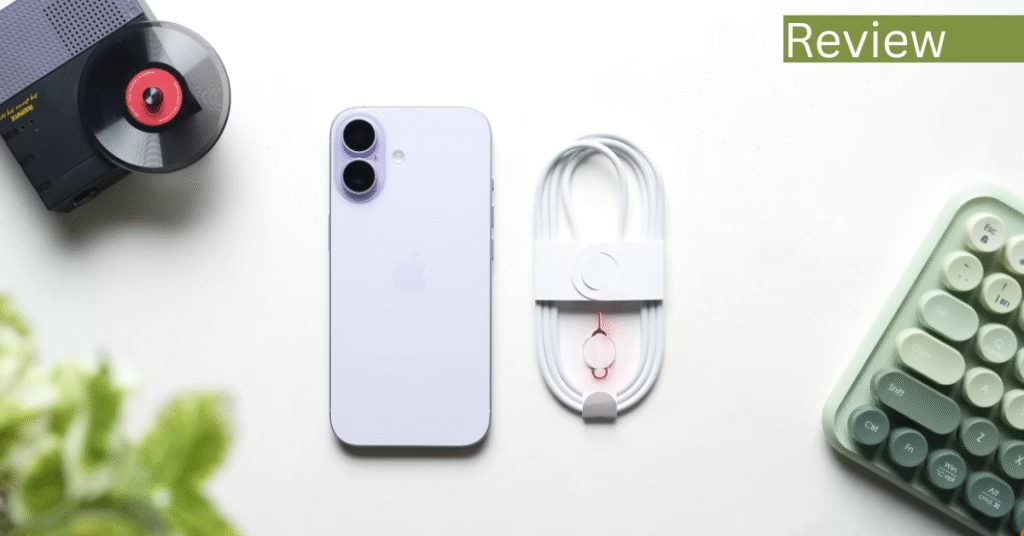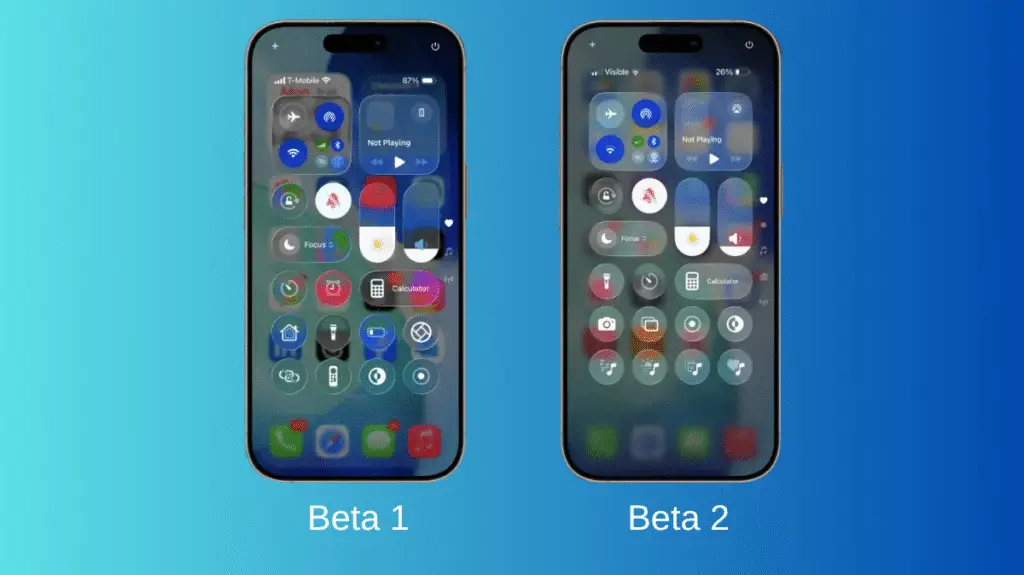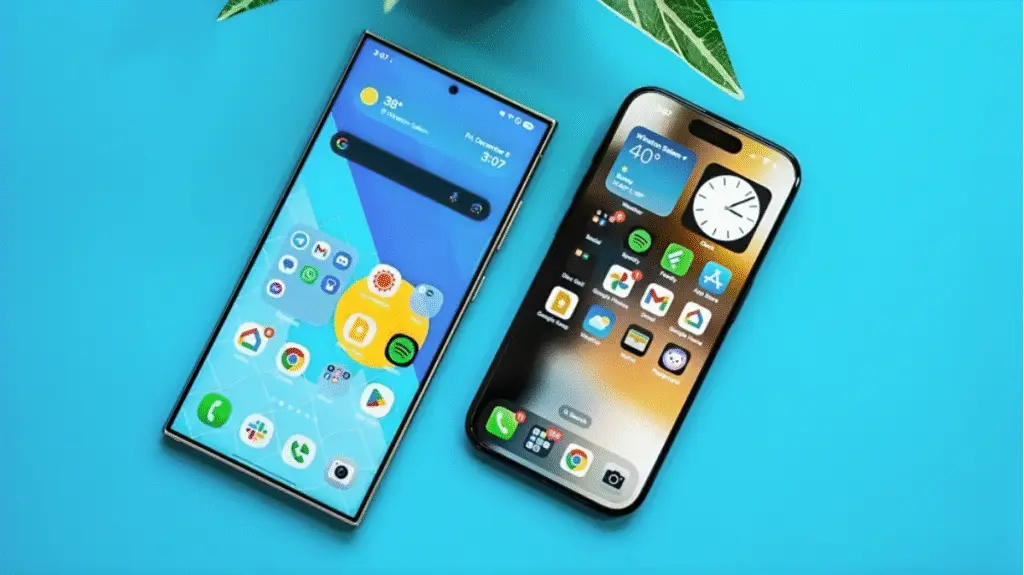
When Apple announced its latest lineup this fall, all eyes were on the new Pro models and the debut of the iPhone Air. Yet, somewhat quietly, the Apple iPhone 17 has emerged as one of the most compelling smartphones of 2025. At first glance, it may not look like a massive leap forward, but after spending some time with it, the subtle refinements and major under-the-hood upgrades make this phone stand out as one of the strongest value options Apple has offered in years.
Design
From the outside, the iPhone 17 closely resembles last year’s iPhone 16. Apple has stuck with the tried-and-true glass-on-glass build paired with a color-matched aluminum frame. The vertical camera arrangement, introduced with the previous generation, gives the back a cleaner look compared to the older square housing.
New colors help keep things fresh, with Lavender being the standout option this year. It’s a softer, more understated shade compared to the more vibrant colors of the iPhone 16, which some might find more playful. Lavender brings a subtler elegance, while the Mist Blue and Sage variants cater to those who prefer cooler tones.
The Action Button, introduced last year, is still here and remains one of Apple’s most practical design decisions. Alongside it, the dedicated camera control button is available too, though some users may not find it as essential in everyday use.
A less visible but important change is the introduction of Ceramic Shield 2 on the front glass. Apple claims it’s three times more scratch-resistant than before, and so far, early use suggests it does a much better job of preventing scuffs. Still, most users will want the reassurance of a case and screen protector.
Display
The biggest and most noticeable change this year comes from the display. The iPhone 17 now sports a 6.3-inch Super Retina XDR OLED panel, up from 6.1 inches last year. Thanks to slimmer bezels, the overall dimensions haven’t ballooned, but the larger screen feels more immersive for video and browsing.
The panel is sharp with a resolution of 2622 × 1206 pixels, matching the clarity of the Pro models. Peak brightness is now a stunning 3000 nits outdoors, ensuring visibility in harsh sunlight, while HDR content shines with punchy colors and deep contrast.
But the headline upgrade is the long-awaited inclusion of ProMotion on a standard iPhone. Apple skipped the half-step of a 90 Hz refresh rate and went straight to 120 Hz, putting the regular model on par with the Pros in terms of fluidity. Navigating iOS, scrolling social media, and gaming all feel significantly smoother.
And yes, the iPhone 17 finally supports an Always-On Display, another Pro feature trickling down. This closes one of the biggest gaps between the standard and premium iPhones.
Performance
Under the hood, the iPhone 17 is powered by Apple’s A19 chip, the latest non-Pro processor. It’s paired with 8 GB of RAM and starts with 256 GB of storage, double the previous base model. The performance leap is significant, especially with the more demanding iOS 26 running on top.
Everyday use is as fast and seamless as you’d expect: apps open instantly, multitasking is smooth, and even demanding games run without lag. Benchmarks show the A19 outpacing many laptop chips in single-core performance, and real-world use backs that up.
One underrated feature tied to this chip is Memory Integrity Enforcement (MIE), a hardware-level security system designed to protect against spyware and memory attacks. It’s not flashy, but it adds another layer of protection in an era of increasing digital threats.
Battery and Charging
Apple promises modest improvements in efficiency, but early impressions suggest battery life is roughly similar to last year. Expect around 7 hours of screen-on time under mixed use. That’s not groundbreaking, but it’s reliable enough to get through a full day.
Charging is handled via USB-C, with support for up to 40W fast charging, giving you around 50% in just 20 minutes with the right adapter. MagSafe and Qi2 wireless charging are supported as well. While rivals in the Android space push charging speeds much higher, Apple’s approach favors safety and battery health over raw numbers.
Cameras
The rear camera system looks simple with two lenses, but both have received meaningful upgrades. The main wide sensor and the ultrawide are now 48 megapixels each, offering sharper detail and improved low-light performance. Apple uses a new “fusion” process to combine multiple exposures for the best possible result, balancing detail with natural color.
Photos continue to impress with realistic tones that don’t lean into over-processed or oversaturated looks. The ultrawide lens, often an afterthought in older models, is now genuinely sharp and usable. The lossless 2x zoom adds versatility, almost giving the feeling of a three-camera setup.
Video remains best-in-class, with crisp 4K footage that creators and casual users alike will appreciate. Apple still holds the crown for video consistency and natural color rendering.
The front-facing camera is where Apple surprised many. It’s now an 18 MP sensor with a new Center Stage feature, previously only on iPads. The camera can track faces and adjust framing dynamically, which works well for group selfies and video calls. Being able to switch easily between portrait and landscape selfies is a small but welcome touch.
Software
The iPhone 17 ships with iOS 26, which introduces new features like smarter call screening, customizable lock screens, and deeper integration with Apple Intelligence. While Apple didn’t spend much time talking about its intelligence features during launch, they added practical tools like improved text suggestions, image editing shortcuts, and proactive reminders.
Combined with the smoothness of the 120 Hz display, iOS 26 feels more fluid and polished on the iPhone 17 than on older devices.
Price and Value
The iPhone 17 starts at $799 for 256 GB, with a 512 GB model available for those who need more space. Importantly, Apple didn’t raise the price despite doubling the base storage.
When you weigh the upgrades, larger display, ProMotion, always-on, stronger cameras, A19 performance, and new durabilitythe iPhone 17 offers arguably the best value in Apple’s lineup this year. For many buyers, it may even be a smarter pick than the Pro models.
Final Thoughts
The Apple iPhone 17 might look familiar at first glance, but it’s one of the most meaningful updates in years for a standard iPhone. The addition of Pro-level display tech, improved cameras, and a stronger chip narrows the gap between this model and the Pros more than ever before.
Yes, it lacks some of the extra features like telephoto zoom or the titanium build of the Pro line, but for most people, those differences won’t justify the extra cost. With a starting price that remains unchanged and a bump in storage, the iPhone 17 makes a strong case for itself as the best value smartphone of 2025.
If you’ve been holding onto an older iPhone or even last year’s model, this generation offers enough meaningful improvements to be worth the upgrade. And while it may not scream “new” from across the room, the iPhone 17 is proof that sometimes the biggest leaps forward happen on the inside.
See Also iPhone 13 Pro Max vs 16 Pro Max: Should You Upgrade?
FAQs
What are the new features of the Apple iPhone 17?
The iPhone 17 introduces a larger 6.3-inch display with slimmer bezels, ProMotion 120 Hz refresh rate, an Always-On Display, upgraded dual 48 MP rear cameras, a new 18 MP selfie camera with Center Stage, the A19 chip, Ceramic Shield 2 glass, and iOS 26 out of the box.
How much does the iPhone 17 cost?
The base model starts at $799 for 256 GB storage. A 512 GB version is also available at a higher price.
What colors are available for the iPhone 17?
It comes in Lavender, Mist Blue, Sage, White, and Black.
Does the iPhone 17 support fast charging?
Yes. With a 40W or higher adapter, the phone can reach 50% in about 20 minutes. It also supports MagSafe and Qi2 wireless charging.
Is the iPhone 17 water resistant?
Yes, it has an IP68 rating, meaning it can withstand being submerged up to 6 meters for 30 minutes.
How is the iPhone 17 camera compared to the iPhone 16?
The iPhone 17 features dual 48 MP rear cameras with a new fusion imaging process for sharper detail and improved low-light shots. The front camera also received a big update with Center Stage tracking.
Should I upgrade to the iPhone 17 from iPhone 16?
If you value smoother 120 Hz display performance, better cameras, and longer software support, the iPhone 17 is a solid upgrade. However, design-wise, it looks quite similar to the iPhone 16.



